
Learn how the Preamble to the US Constitution reflects the democratic ideals of the Framers.
- Subject:
- Political Science
- Social Science
- Material Type:
- Lesson
- Provider:
- Khan Academy
- Provider Set:
- Khan Academy
- Author:
- Sal Khan
- Date Added:
- 07/16/2021

Learn how the Preamble to the US Constitution reflects the democratic ideals of the Framers.

Ideas of natural rights, social contract, popular sovereignty, limited government and republicanism and their influence on the foundation of the United States of America.
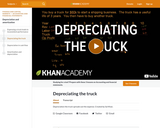
Depreciation the truck spreads out the expense. Created by Sal Khan.
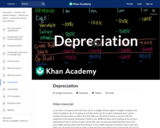
Depreciation a capital asset. Created by Sal Khan.

How to account for things when you own the building instead of renting it. Created by Sal Khan.
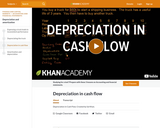
Depreciation in Cash Flow. Created by Sal Khan.
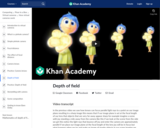
In this video we'll explore why regions in our scenes can go "out of focus." The region of our scene which is in focus call depth of field..

Where does a buyer's demand curve come from? A rational buyer wants to get as much "bang per buck" from their consumption as possible. In economics, that's called marginal utility per dollar spent. When the price of a good decreases, the "bang per buck" on that good increases, which incentivizes consuming more of it. In this video, we derive the individual's demand curve for a good by tweaking the marginal utility per dollar spent. Created by Sal Khan.
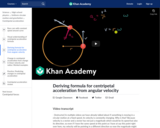
Deriving formula for centripetal acceleration in terms of angular velocity. using linear speed formula.

Showing how a change in government spending can lead to a new equilibrium. Created by Sal Khan.

A framework for thinking about how many detectable civilizations are out there. Created by Sal Khan.

Why do we even care about the Drake Equation. Thinking about the fraction of a planet's life when a civilization might be detectable. Created by Sal Khan.

Reconciling with the traditional Drake Equation. Created by Sal Khan.

Taking a shot at estimating the number of detectable civilizations. Created by Sal Khan.

More reasons why we haven't detected anything yet. Created by Sal Khan.

Walk through the logic of determining what kind of good has the most elastic demand in this video.
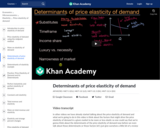
There are several factors that affect how elastic (or inelastic) the price elasticity of demand is, such as the availability of substitutes, the timeframe, the share of income, whether a good is a luxury vs. a necessity, and how narrowly the market is defined. We explore each of these in this video.

Microbiology is the study of microorganisms, which are tiny organisms that can only be seen with a microscope. Microorganisms include bacteria, viruses, fungi, and protozoa. Microorganisms are found everywhere in the environment, including in water, soil, air, and in the bodies of plants and animals. Microbiology is an important science that helps us to understand how microorganisms interact with each other and with their environment. Microbiology also helps us to understand how microorganisms can cause disease and how they can be used to produce food and medicines. Teaching microbiology can be a fun and interesting experience for students. There are many different ways to teach microbiology, and the best way to teach it will depend on the students’ age and level of education. One way to teach microbiology is to use learning materials that are specifically designed for schools. These materials can help to make the learning process more fun and interesting for students. Some of the best practices for developing microbiology learning materials for schools include: 1. Developing materials that are age-appropriate 2. Using fun and interactive activities 3. Incorporating images and videos 4. Using real-world examples 5. Including assessment questions

This lesson compares rational number and orders them from least to greatest using the number line. [Developmental Math playlist: Lesson 132 of 196]

This lesson demonstrates how to compare whole numbers. [Developmental Math playlist: Lesson 7 of 196]